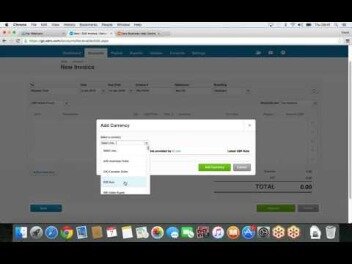
Ideally, you should reconcile your bank account each time you receive a statement from your bank. This is often done at the end of every month, weekly and even at the end of each day by businesses that have a large number of transactions. Bank errors are mistakes made by the bank while creating the bank statement. Common errors include entering an incorrect amount or omitting an amount from the bank statement. Compare the cash account’s general ledger to the bank statement to spot the errors.
- As such, a $900 error should be noted in the reconciliation and an adjusting journal entry should be recorded.
- The enterprise-grade solution can pull data from any source in seconds, ingest data in various formats, and perform complex data matching.
- However, the depositor/customer/company debits its Cash account to increase its checking account balance.
- Businesses and individuals may reconcile their records daily, monthly, quarterly, or annually.
- The uploading user’s name and the date and time is automatically recorded with the attachment, and no one else can edit information.
Reconciliation confirms that the recorded sum leaving an account corresponds to the amount that’s been spent and that the two accounts are balanced at the end of the reporting period. Both of them create timing differences between the internal records and the bank statement, leading to reconciliation discrepancies. At this point, you might need to identify and adjust these items in the reconciliation process. This way, you can achieve a more accurate representation of your financial position and ensure the integrity of the financial records. There may be instances where a mistake or error causes a discrepancy between the general ledger and the supporting data. According to Investopedia, the definition of account reconciliation is “an accounting process that compares two sets of records to check that figures are correct and in agreement.
What Creates Reconciliation Discrepancies?
There are many reasons why the account reconciliation process is important. First and foremost, it can help determine whether there has been a potential error in the accounting process or inside the general ledger. Here’s an overview of how to do accounts reconciliation to ensure your company’s financial positions stay accurate.

However, if these procedures are not effectively monitored, dishonest workers may use them to conceal evidence of criminal conduct within the firm. For instance, an employee responsible for executing vendor reconciliation could purposely use their position to delete a record. Intentional or accidental errors and discrepancies should be recognized, investigated, and corrected immediately. Reconciliation processes are at their most efficient when they are uniform and exhaustive. Everyone working on the reconciliation should know their role and what is expected of them. Examine the source papers for any changes between approval and transaction completion, especially if they are paper-based.
Missing Transactions
Read how in just a matter of weeks, Qualys leveraged FloQast to standardize the close process and organize controls and documentation for a more simplified SOX compliance. For instance, a large corporation may have countless records, and managing this information across multiple tools could lead to omitting a critical detail. Regardless of their industry or size, most firms experience this difficulty.
- In such a situation, there can be inter-company deposits made, depending on the requirements of different companies.
- But if you don’t reconcile your accounts regularly, you might not catch mistakes as they arise.
- This ultimately frees up hours or days of your accountant’s time that they would otherwise spend posting accounts that need no reconciliation and searching for those that do.
- You receive a bank statement, typically at the end of each month, from the bank.
Doing that work manually is tedious and time-consuming to say the least, and it’s easy to make mistakes. Adding to the challenge, some transactions may be split on one side but not the other. Accounts receivable, accounts payable, inventory, and fixed assets may be tracked in separate subledgers or schedules. Some systems record all transactions involving cash in a ledger called a cashbook.
F&A teams have embraced their expanding roles, but unprecedented demand for their time coupled with traditional manual processes make it difficult for F&A to execute effectively. The path from traditional to modern accounting is different for every organization. BlackLine’s Modern Accounting Playbook delivers a proven-practices approach to help you identify and prioritize your organization’s critical accounting gaps and map out an achievable path to success.
What is the Process of General Ledger Reconciliation
The examples below are intended to help get you started if you don’t already have a listing. The process of correlating one set of records with another set of records and/or a physical inventory count that involves identifying, explaining, and correcting differences. Today’s leading FP&A or corporate performance management (CPM) systems include workflow automation, version control, audit trails and other measures required for transparency and control.

As a result, Community Bank’s balance sheet will report an additional $10,000 in assets and an additional $10,000 in liabilities. As you know, the balances in asset accounts are increased with a debit entry. Aside from ERP systems, standalone Excel spreadsheets have played a dominant role with accounting and FP&A professionals for more than three decades.
These discrepancies happen when you neglect to capture a few entries in the general ledger but include them in other statements. When all your information is correct, you’re less likely to miss deposits or mistakenly overdraft an account because of a lack of funds. You’ll know exactly how much money you can budget for vendors, operating expenses, and other payments. Account reconciliation allows you to identify potential errors like misapplied payments and take action. This method of reconciliation involves using estimates of historical account activity levels and other metrics.
The process of comparing the positions held in two or more portfolios to determine whether or not they are identical is referred to as position reconciliation. Investing managers frequently carry out this practice to guarantee that the portfolios they Debit and Credit Cheat Sheet manage are consistent with the investment goals they have set for themselves. To ensure that a review is performed, reconciliation should be carefully documented. Managing cash flow is crucial for any business, regardless of size or industry.
What Are the Steps in Account Reconciliation?
The goal is to establish whether there are any discrepancies and, if so, to explore and rectify them. It’s vital businesses know what type of reconciliation to use and the bank reconciliation process flow in order to be as efficient as possible. Documentation review is the most commonly used account reconciliation method. It involves calling up the account detail in the statements and reviewing the appropriateness of each transaction. The documentation method determines if the amount captured in the account matches the actual amount spent by the company. If you already use accounting software such as Synder Books, you can easily connect your bank accounts to get a regularly updated, live picture of your current account balance.
Bank errors are uncommon, but the company should notify the bank immediately to report the problems. The fix will appear in a future bank statement, but it will require an adjustment to the current period’s bank reconciliation to reconcile the discrepancy. After finding evidence for all differences between the bank statement and the cash book, the balances in both records should be equal. You should prepare a bank reconciliation statement that explains the difference between the company’s internal records and the bank account.
Daily, monthly, or annual record-keeping reconciliations are all decent options for businesses and individuals. Best practice states you should reconcile your bank accounts at least every month.Weekly reconciliation can be too granular and time-consuming for most businesses, but leave it too long and mistakes can be missed. Tick all transactions recorded in the cash book against similar transactions appearing in the bank statement.
These are often cash transactions (i.e. one company lending funds to another) but another common example is one company declaring to dividends to another in the group. Vendor reconciliations compare the balance owed on supplier provided statements to transactions within the payable ledger and its overall balance. Reconciliation is definitely not one of the most exciting tasks around, but there’s no thrill quite like spending hours — or even days — reconciling a beast of an account and getting the numbers to tie out perfectly. The key role that reconciliation plays in making sure your numbers are right means that anyone who works with financials needs to master the reconciliation process. Starting with the ending balance of the prior period, you add all the increases and subtract all the decreases to get to the ending balance.
Account reconciliation is the process of verifying and reconciling a company’s financial records with external sources like bank statements. Its purpose is to ensure accuracy and consistency of financial data, which is vital for informed decision-making and maintaining financial integrity. This process ensures that entries in your company’s general ledger are consistent with the corresponding subledgers. Unexplained discrepancies in a company’s financial records can point to serious problems like fraud or theft. It’s important that your accounting team balance the books accurately, lest you miss out on spotting issues early. While there are different types of account reconciliations, it’s common to compare the general ledger to other third-party systems or statements.